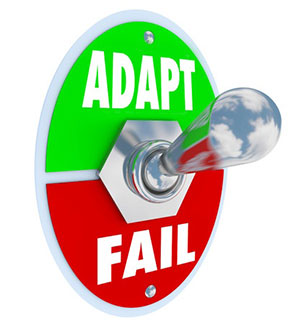- Aug 11, 2014
- By Cleriti Blogger
- In Social Media and Digital Marketing, Marketing Strategy and Planning, Content Marketing



We're always thinking, discovering and sharing our knowledge of how to connect with customers in the digital age. Here we share some of those thoughts.

 As customer behavior continues to evolve, your approach to marketing must also evolve. Gone are the days when traditional outbound marketing tactics like TV, radio and print advertisements were the only ways to earn “real” business. Today’s customers are savvy, informed and don’t want to be “talked at” – they crave a real dialogue that’s authentic and meaningful. That’s where inbound marketing comes in as the best way to improve digital marketing ROI
As customer behavior continues to evolve, your approach to marketing must also evolve. Gone are the days when traditional outbound marketing tactics like TV, radio and print advertisements were the only ways to earn “real” business. Today’s customers are savvy, informed and don’t want to be “talked at” – they crave a real dialogue that’s authentic and meaningful. That’s where inbound marketing comes in as the best way to improve digital marketing ROI
Inbound marketing is more than a hot buzzword – it’s the future for marketing in the digital age. Inbound marketing brings customers directly to you through an integrated program that combines the best of multiple strategies, including SEO, content marketing, social media marketing, and email marketing. Inbound does this by delivering the right piece of content to the right lead at the right time.
Ready to make the transition from outbound to inbound? Follow these four steps for improved digital marketing ROI:
You don’t need to throw out your entire marketing program; for example, you may have a great CRM system that can be integrated into your new inbound marketing tactics. The key is to identify where the current problems are in your sales pipeline. Are you generating a lot of leads but failing to close the deal? This is a pretty common problem; in fact, 57% of B2B organizations identify 'converting qualified leads into paying customers' as a top funnel priority, according to Marketing Sherpa. This is no surprise, as 65% of B2B marketers have not established lead nurturing. An integrated content marketing, social media marketing and email marketing can help rectify these problems.
Get started with the basics: focus on one or two social media channels where your customers are most active and go from there. For most B2Bs, this means getting started with LinkedIn and either Facebook or Twitter. B2Cs, however, may benefit more from being active on Instagram or Pinterest, depending on the different buyer personas. Consistency is key: aim to communicate via social media on a regular basis and, whatever you do, don’t just re-tweet your most recent company blog post. Comment upon industry trend reports, curate interesting information for your followers, ask questions, and engage your followers in a genuine conversation about the things that matter most to them. You can’t just schedule social media posts at the beginning of the week and hope that’s enough. You need to have consistent, daily interaction on social media channels.
If you think email marketing is synonymous with blasting your entire list with “special offer” emails, it’s time to rethink your program and turn it into a true inbound lead generator. Impersonalized blast emails are not just a waste of your time, they also can hurt your brand. When done correctly, email marketing is incredibly effective. For example, lead nurturing emails generate a response rate that’s four to 10 times better than an impersonalized, standalone email blasts, according to SilverPop/DemandGen Report. Personalization matters; click-through-rate (CTR) is higher when using the recipient’s first name in the subject line over no use of the first name, according to HubSpot. Aberdeen Group found that personalized emails improve click-through rates by 14% and conversion rates by 10%.
Even if your business is national, local mobile searches convert. If your business has multiple branches, it’s critical that these branches show up in local mobile searches. According to LocalVox, 88% of local mobile searches convert to a phone call or visit within 24 hours. Multi-location brands that integrate local marketing processes will see a 10-15% increase in revenue by 2015, predicts Gartner. New to mobile? Start with the basics: verify your NAP data (name, address, place) is correct with Google; after all, you don’t want a customer driving to the wrong location or thinking your store is closed when it’s actually open. Next, be sure to use responsive design so your site loads properly on smartphones and tablets.
Outbound marketing tactics can be intrusive and turn your prospective customers away from contacting your business. By converting your marketing program to inbound through an integrated approach to social media, content marketing and email marketing, the leads will come to you, rather than you chasing them.
We know what it takes to create meaningful connections with customers.
Subscribe to our newsletter and start thinking with Cleriti.

